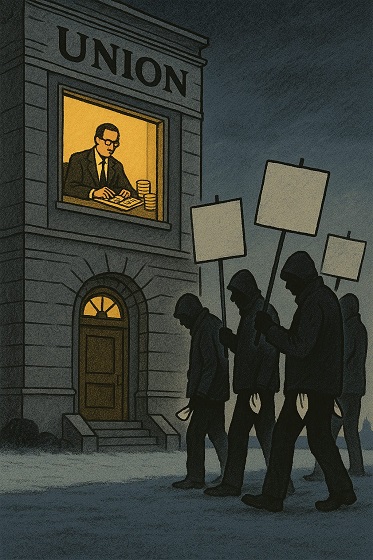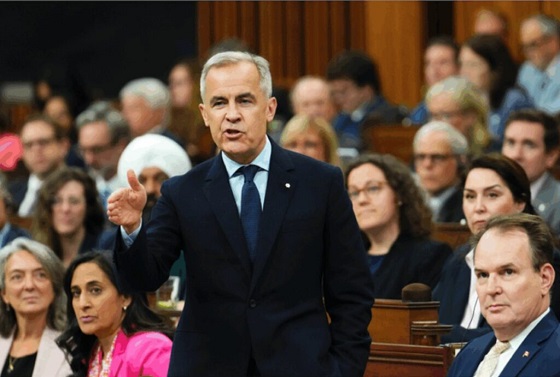Addictions
B.C. parents powerless to help their addicted teens
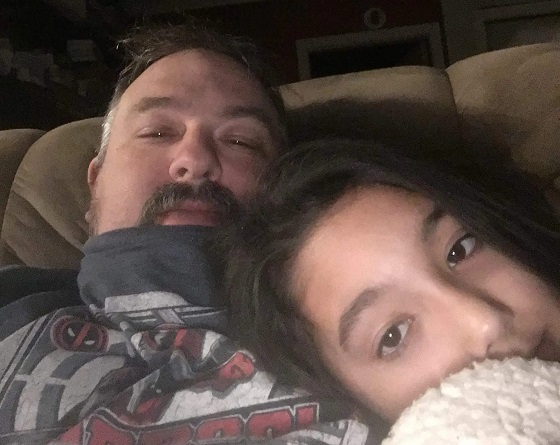
B.C. parents say the province’s safer supply program and legal treatment framework leave them powerless to help their addicted teens
On Aug. 19, 2022, Kamilah Sword took a single hydromorphone pill, believing it to be safe. She overdosed and was found dead by her grandmother the next day. She was 14.
Kamilah believed the drug was safe — despite having bought it illicitly — because she was told it came from a government-run “safer supply” program, according to Kamillah’s best friend Grace Miller and her father.
“I’ll never get to see her get married, never have grandkids, never get to see her graduate,” said Kamilah’s father, Gregory Sword, lowering his chin to keep his voice steady.
“It’s a black hole in the heart that never heals.”
Sword faced significant challenges trying to get his daughter help during the year he was aware she was struggling with addiction. He blames British Columbia’s safer supply program and the province’s legal youth treatment framework for exacerbating his daughter’s challenges and ultimately contributing to her death.
“It’s a B.C. law — you cannot force a minor into rehab without their permission,” said Sword. “You cannot parent your kid between the ages of 12 and 18 without their consent.”
Sword is now pursuing legal action against the B.C. and federal governments and several health agencies, seeking accountability for what he views as systemic failures.
B.C.’s “Safe” supply program
B.C.’s prescribed safer supply program, which was first launched in 2020, is designed to reduce substance users’ reliance on dangerous street drugs. Users are prescribed hydromorphone — an opioid as potent as heroin — as an alternative to using potentially lethal street drugs.
However, participants in the program often sell their hydromorphone, in some cases to teenagers, to get money to buy stronger drugs like fentanyl.
According to Grace Miller, she and Kamilah would obtain hydromorphone — which is commonly referred to as Dilaudid or “dillies” — from a teenage friend who bought them in Vancouver’s Downtown Eastside. The neighbourhood, which is the epicentre of Vancouver’s drug crisis, is a 30-minute SkyTrain ride from the teenagers’ home in Port Coquitlam.
Sword says he initially thought “dillies” referred to Dairy Queen’s Dilly Bars. “My daughter would ask me for $5, [and say], ‘Yeah, we’re going to Dairy Queen for a Dilly Bar.’ I had no idea.”
He says he only learned about hydromorphone after the coroner informed him that Kamilah had three substances in her system: cocaine, MDMA and hydromorphone.
“I had to start talking to people to figure out what [hydromorphone] was and where it was coming from.”
Sword is critical of B.C.’s safer supply program for being presented as safe and for lacking monitoring safeguards. “[Kamilah] knew where [the drugs] were coming from so she felt safe because her dealer would keep on telling her, ‘This is safe supply,’” Sword said.
In February, B.C. changed how it refers to the program from “prescribed safer supply” to “prescribed alternatives.”
Grace says another problem with the program is the quantities of drugs being distributed.
“It would be a big difference if the prescriptions that they were giving out were dosed properly,” she said, noting addicts would typically sell bottles containing 14 pills, with pricing starting at $1 a pill.
‘Safer supply’
Sword estimates his daughter struggled with addiction for about 18 to 24 months before her final, fatal overdose.
After Kamilah overdosed for the first time on Aug. 21, 2021, he tried to get her into treatment. A drug counsellor told him that, because she was over 12, she would need to verbally consent. Kamilah refused treatment.
B.C.’s Infants Act allows individuals aged 12 or older to consent to their own medical treatment if they understand the treatment and its implications. The province’s Mental Health Act requires minors aged 12 to 16 to consent to addiction or mental health treatment.
While parents can request involuntary admission for children under 16, a physician or nurse practitioner must first confirm the presence of a mental disorder that requires treatment. No law specifically addresses substance-use disorders in minors.
When Kamilah was admitted to the hospital on one occasion, she underwent a standard psychiatric evaluation and was quickly discharged — despite Sword’s protests.
Ontario also has a mental health law governing involuntary care. Similar to B.C., they permit involuntary care only where a minor has been diagnosed with a mental disorder.
By contrast, Alberta’s Protection of Children Abusing Drugs Act enables a parent or guardian to obtain a court order to place a child under 18 who is struggling with addiction into a secure facility for up to 15 days for detoxification, stabilization and assessment. Alberta is unique among the provinces and territories in permitting involuntary care of minors for substance-use issues.
Grace, who also became addicted to opioids, says her recovery journey involved several failed attempts.
“I never thought I would have almost died so many times,” said Grace, who is now 16. “I never thought I would even touch drugs in my life.”
Grace’s mother Amanda (a pseudonym) faced similar struggles as Sword in trying to get help for her daughter. Amanda says she was repeatedly told nothing more could be done for Grace, because Grace would not consent to treatment.
“One time, [Grace] overdosed at home, and I had to Narcan her because she was dead in her bed,” Amanda said. “I told the paramedic, ‘Our system is broken.’ And she just said, ‘Yes, I know.’”
Yet Grace, who today has been sober for 10 months, would question whether she even had the capacity to consent to treatment when she was addicted to drugs.
Under B.C.’s Health Care (Consent) and Care Facility (Admission) Act, an adult is only considered to have consented to health care if their consent is voluntary, informed, legitimately obtained and the individual is capable of making a decision about their care.
“Mentally able to give consent?” said Grace. “No, I was never really mentally there.”
Subscribe for free to get BTN’s latest news and analysis – or donate to our investigative journalism fund.
System failure
Today, Sword is one of two plaintiffs leading a class-action lawsuit against several provincial and federal health authorities and organizations, including the B.C. Ministry of Health, Health Canada, Vancouver Coastal Health and Vancouver Island Health.
All four of these agencies declined to comment for this story, citing the ongoing court proceedings.
The lawsuit was filed Aug. 15 and is currently awaiting certification to proceed. It alleges the coroner initially identified safer supply drugs as a cause of Kamilah’s death, but later changed the report to omit this reference due to pressure from the province or for other unknown reasons.
It further alleges B.C. and Ottawa were aware that drugs prescribed under safer supply programs were being diverted as early as March 2021, but failed to monitor or control the drugs’ distribution. It points to a Health Canada report and data showing increased opioid-related problems from safer supply programs.
According to Amanda, Kamilah had wanted to overcome her addiction but B.C.’s system failed her.
“I had multiple conversations with Kamilah, and I know Kamilah wanted to get clean,” she says. “But she felt so stuck, like she couldn’t do it, and she felt guilty and ashamed.”
Grace, who battled addiction for four years, is relieved to be sober.
“I’ve never, ever been happier. I’ve never been healthier. It’s the best thing I’ve done for myself,” she said. “It’s just hard when you don’t have your best friend to do it with.”
This article was produced through the Breaking Needles Fellowship Program, which provided a grant to Canadian Affairs, a digital media outlet, to fund journalism exploring addiction and crime in Canada. Articles produced through the Fellowship are co-published by Break The Needle and Canadian Affairs.
Break The Needle. Our content is always free – but if you want to help us commission more high-quality journalism, consider getting a voluntary paid subscription.
Addictions
Activists Claim Dealers Can Fix Canada’s Drug Problem
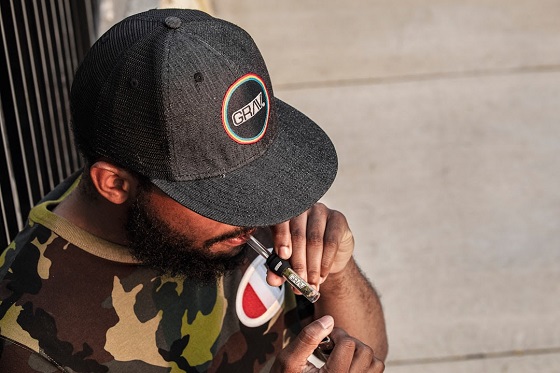
By Adam Zivo
We should learn from misguided experiments with activist-driven drug ideologies.
Some Canadian public-health researchers have argued that the nation’s drug dealers, far from being a public scourge, are central to the cause of “harm reduction,” and that drug criminalization makes it harder for them to provide this much-needed “mutual aid.” Incredibly, these ideas have gained traction among Canada’s policymakers, and some have even been put into practice.
Gillian Kolla, an influential harm-reduction activist and researcher, spearheaded the push to whitewash drug trafficking in Canada. Over the past decade, she has advocated for many of the country’s failed laissez-faire drug policies. In her 2020 doctoral dissertation, she described her hands-on research into Toronto’s “harm reduction satellite sites”—government-funded programs that paid drug users to provide services out of their homes.
The sites Kolla studied were operated by the nonprofit South Riverdale Community Health Centre (SRCHC) in Toronto. Addicts participating in the programs received $250 per month in exchange for distributing naloxone and clean paraphernalia (needles and crack pipes, for example), as well as for reversing overdoses and educating acquaintances on safer consumption practices. At the time of Kolla’s research (2016–2017), the SRCHC was operating nine satellite sites, which reportedly distributed about 1,500 needles and syringes per month.
Canada permits supervised consumption sites—facilities where people can use drugs under staff oversight—to operate so long as they receive an official exemption via the federal Controlled Drugs and Substances Act. As the sites Kolla observed did not receive exemptions, they were certainly illegal. Kolla herself acknowledged this in her dissertation, writing that she, with the approval of the University of Toronto, never recorded real names or locations in her field notes, in case law enforcement subpoenaed her research data.
Even so, the program seems to have enjoyed the blessing of Toronto’s public health officials and police. The satellite sites received local funding from 2010 onward, after a decade of operating on a volunteer basis, apparently with special protection from law enforcement. In her dissertation, Kolla described how SRCHC staff trained police officers to leave their sites alone, and how satellite-site workers received special ID badges and plaques to ward off arrest.
Kolla made it clear that many of these workers were not just addicts but dealers, too, and that tolerance of drug trafficking was a “key feature” of the satellite sites. She even described, in detail, how she observed one of the site workers packaging and selling heroin alongside crackpipes and needles.
In her dissertation, Kolla advocated expanding this permissive approach. She claimed that traffickers practice harm reduction by procuring high-quality drugs for their customers and avoiding selling doses that are too strong.
“Negative framings of drug selling as predatory and inherently lacking in care make it difficult to perceive the wide variety of acts of mutual aid and care that surround drug buying and selling as practices of care,” she wrote.
In truth, dealers routinely sell customers tainted or overly potent drugs. Anyone who works in the addiction field can testify that this is a major reason that overdose deaths are so common.
Ultimately, Kolla argued that “real harm reduction” should involve drug traffickers, and that criminalization creates “tremendous barriers” to this goal.
The same year she published her dissertation, Kolla cowrote a paper in the Harm Reduction Journal with her Ph.D. supervisor at the Dalla Lana School of Public Health. The article affirmed the view that drug traffickers are essential to the harm-reduction movement. Around this time, the SRCHC collaborated with the Toronto-based Parkdale Queen West Community Health Centre— the only other organization running such sites—to produce guidelines on how to replicate and scale up the experiment.
Thankfully, despite its local adoption, this idea did not catch on at the national level. It was among the few areas in the early 2020s where Canada did not fully descend into addiction-enabling madness. Yet, like-minded researchers still echo Kolla’s work.
In 2024, for example, a group of American harm-reduction advocates published a paper in Drug and Alcohol Dependence Reports that concluded, based on just six interviews with drug traffickers in Indianapolis, that dealers are “uniquely positioned” to provide harm-reduction services, partly because they are motivated by “the moral imperative to provide mutual aid.” Among other things, the authors argued that drug criminalization is harmful because it removes dealers from their social networks and prevents them from enacting “community-based practices of ethics and care.”
It’s instructive to review what ultimately happened with the originators of this movement—Kolla and the SRCHC. Having failed to whitewash drug trafficking, Kolla moved on to advocating for “safer supply”—an experimental strategy that provides addicts with free recreational drugs to dissuade use of riskier street substances. The Canadian government funded and expanded safer supply, thanks in large part to Kolla’s academic work. It abandoned the experiment after news broke that addicts resell their safer supply on the black market to buy illicit fentanyl, flooding communities with diverted opioids and fueling addiction.
The SRCHC was similarly discredited after a young mother, Karolina Huebner-Makurat, was shot and killed near the organization’s supervised consumption site in 2023. Subsequent media reports revealed that the organization had effectively ignored community complaints about public safety, and that staff had welcomed, and even supported, drug traffickers. One of the SRCHC’s harm-reduction workers was eventually convicted of helping Huebner-Makurat’s shooter evade capture by hiding him from the police in an Airbnb apartment and lying to the police.
There is no need for policymakers to repeat these mistakes, or to embrace its dysfunctional, activist-driven drug ideologies. Let this be another case study of why harm-reduction policies should be treated with extreme skepticism.
Our content is always free
If you want to help us commission more high-quality journalism,
consider getting a voluntary paid subscription.
Addictions
Canadian gov’t not stopping drug injection sites from being set up near schools, daycares

From LifeSiteNews
Canada’s health department told MPs there is not a minimum distance requirement between safe consumption sites and schools, daycares or playgrounds.
So-called “safe” drug injection sites do not require a minimum distance from schools, daycares, or even playgrounds, Health Canada has stated, and that has puzzled some MPs.
Canadian Health Minister Marjorie Michel recently told MPs that it was not up to the federal government to make rules around where drug use sites could be located.
“Health Canada does not set a minimum distance requirement between safe consumption sites and nearby locations such as schools, daycares or playgrounds,” the health department wrote in a submission to the House of Commons health committee.
“Nor does the department collect or maintain a comprehensive list of addresses for these facilities in Canada.”
Records show that there are 31 such “safe” injection sites allowed under the Controlled Drugs And Substances Act in six Canadian provinces. There are 13 are in Ontario, five each in Alberta, Quebec, and British Columbia, and two in Saskatchewan and one in Nova Scotia.
The department noted, as per Blacklock’s Reporter, that it considers the location of each site before approving it, including “expressions of community support or opposition.”
Michel had earlier told the committee that it was not her job to decide where such sites are located, saying, “This does not fall directly under my responsibility.”
Conservative MP Dan Mazier had asked for limits on where such “safe” injection drug sites would be placed, asking Michel in a recent committee meeting, “Do you personally review the applications before they’re approved?”
Michel said that “(a)pplications are reviewed by the department.”
Mazier stated, “Are you aware your department is approving supervised consumption sites next to daycares, schools and playgrounds?”
Michel said, “Supervised consumption sites were created to prevent overdose deaths.”
Mazier continued to press Michel, asking her how many “supervised consumption sites approved by your department are next to daycares.”
“I couldn’t tell you exactly how many,” Michel replied.
Mazier was mum on whether or not her department would commit to not approving such sites near schools, playgrounds, or daycares.
An injection site in Montreal, which opened in 2024, is located close to a kindergarten playground.
Conservative Party leader Pierre Poilievre has called such sites “drug dens” and has blasted them as not being “safe” and “disasters.”
Records show that the Liberal government has spent approximately $820 million from 2017 to 2022 on its Canadian Drugs and Substances Strategy. However, even Canada’s own Department of Health admitted in a 2023 report that the Liberals’ drug program only had “minimal” results.
Recently, LifeSiteNews reported that the British Columbia government decided to stop a so-called “safe supply” free drug program in light of a report revealing many of the hard drugs distributed via pharmacies were resold on the black market.
British Columbia Premier David Eby recently admitted that allowing the decriminalization of hard drugs in British Columbia via a federal pilot program was a mistake.
Former Prime Minister Justin Trudeau’s loose drug initiatives were deemed such a disaster in British Columbia that Eby’s government asked Trudeau to re-criminalize narcotic use in public spaces, a request that was granted.
Official figures show that overdoses went up during the decriminalization trial, with 3,313 deaths over 15 months, compared with 2,843 in the same time frame before drugs were temporarily legalized.
-

 Energy2 days ago
Energy2 days agoCarney bets on LNG, Alberta doubles down on oil
-

 Alberta2 days ago
Alberta2 days agoAlberta on right path to better health care
-
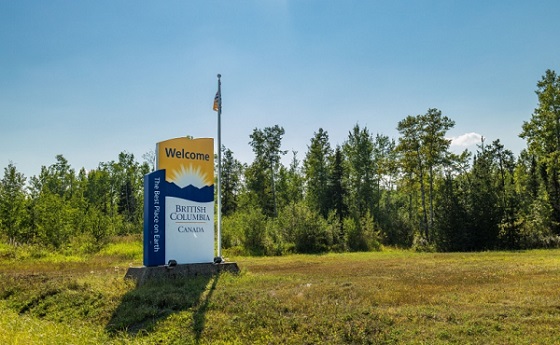
 Indigenous2 days ago
Indigenous2 days agoTop constitutional lawyer slams Indigenous land ruling as threat to Canadian property rights
-

 Alberta2 days ago
Alberta2 days agoCarney government’s anti-oil sentiment no longer in doubt
-

 Alberta1 day ago
Alberta1 day ago‘Weird and wonderful’ wells are boosting oil production in Alberta and Saskatchewan
-

 Alberta2 days ago
Alberta2 days agoAlberta Emergency Alert test – Wednesday at 1:55 PM
-

 Business1 day ago
Business1 day agoCanada is failing dismally at our climate goals. We’re also ruining our economy.
-

 Health2 days ago
Health2 days agoSPARC Kindness Tree: A Growing Tradition in Capstone





